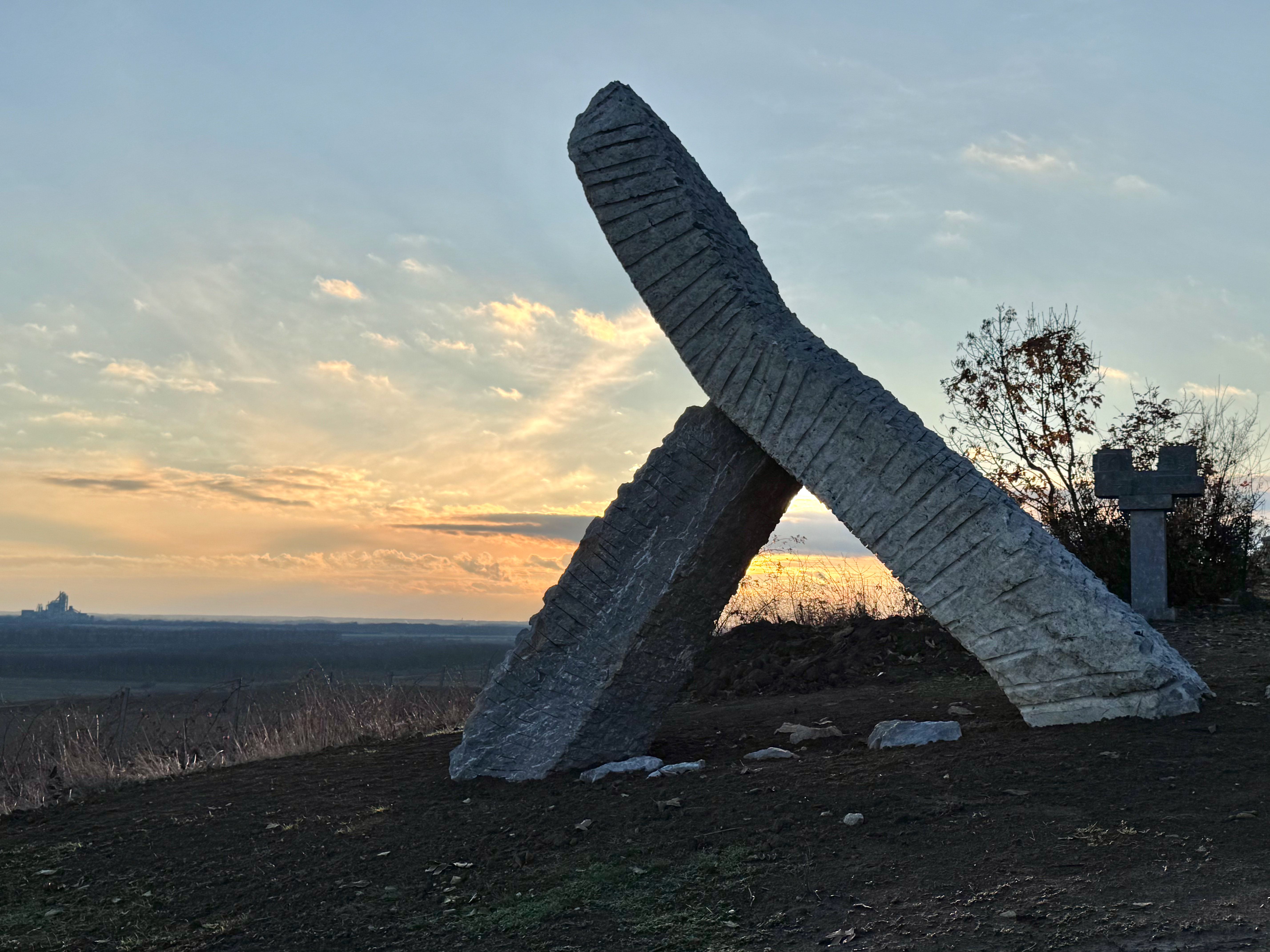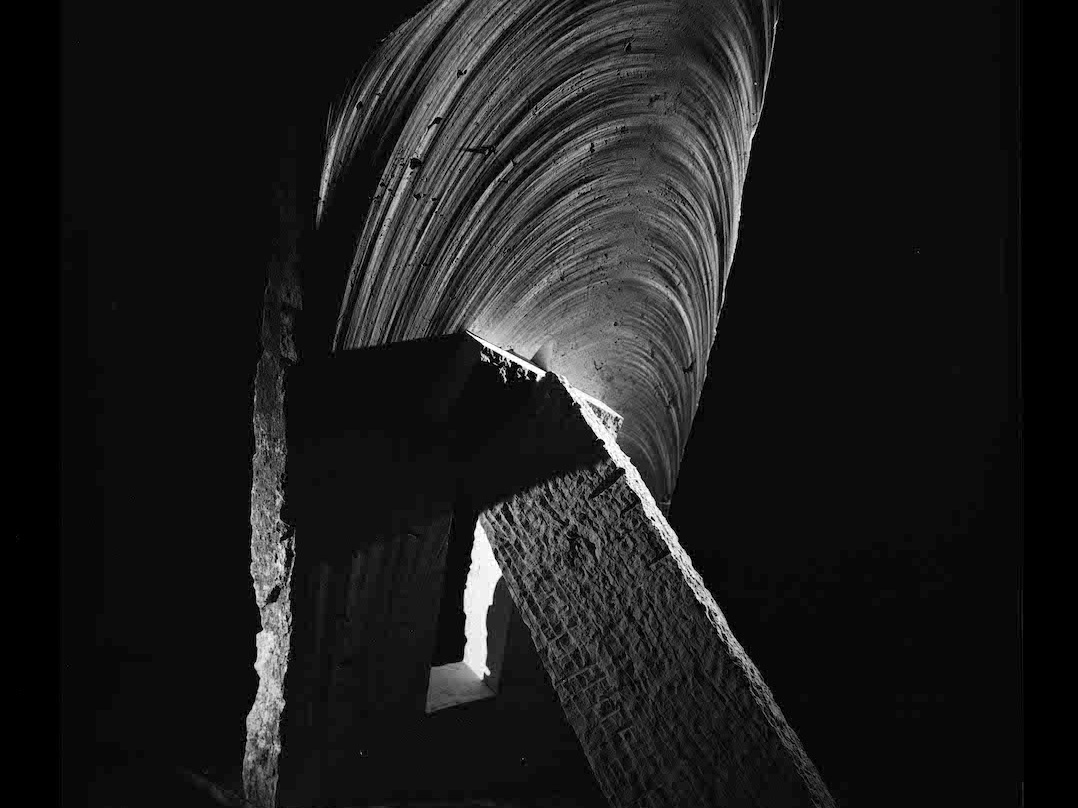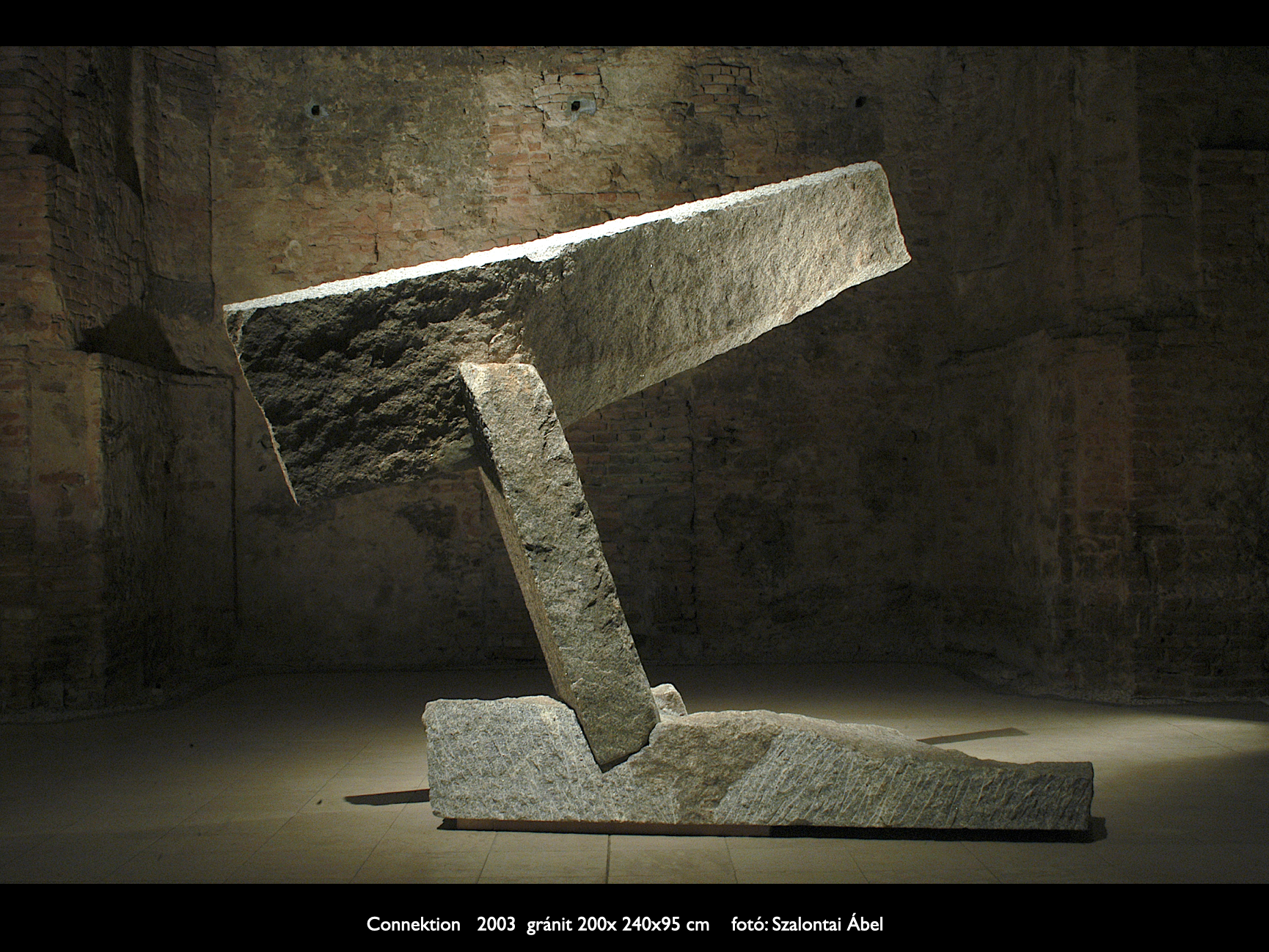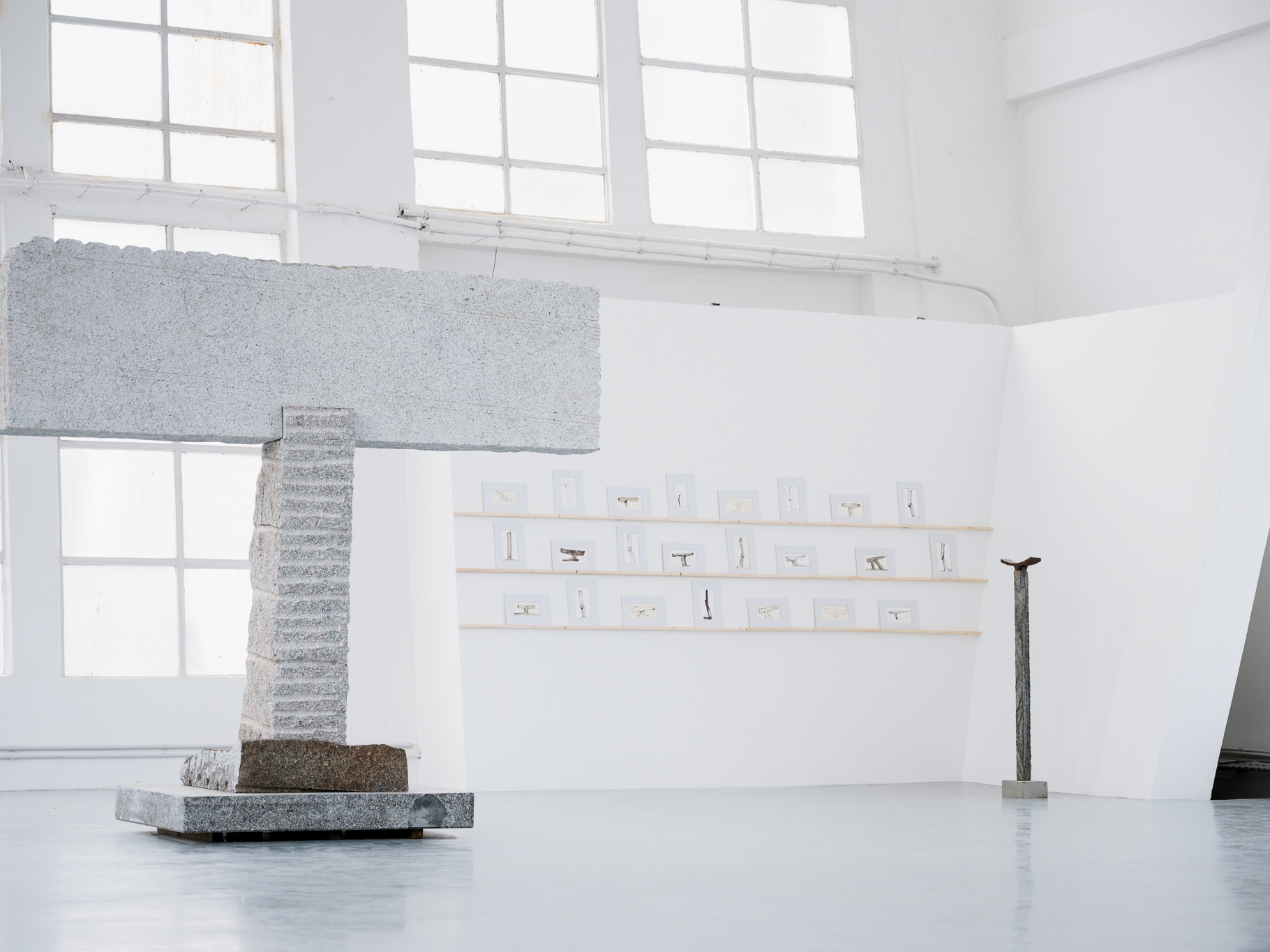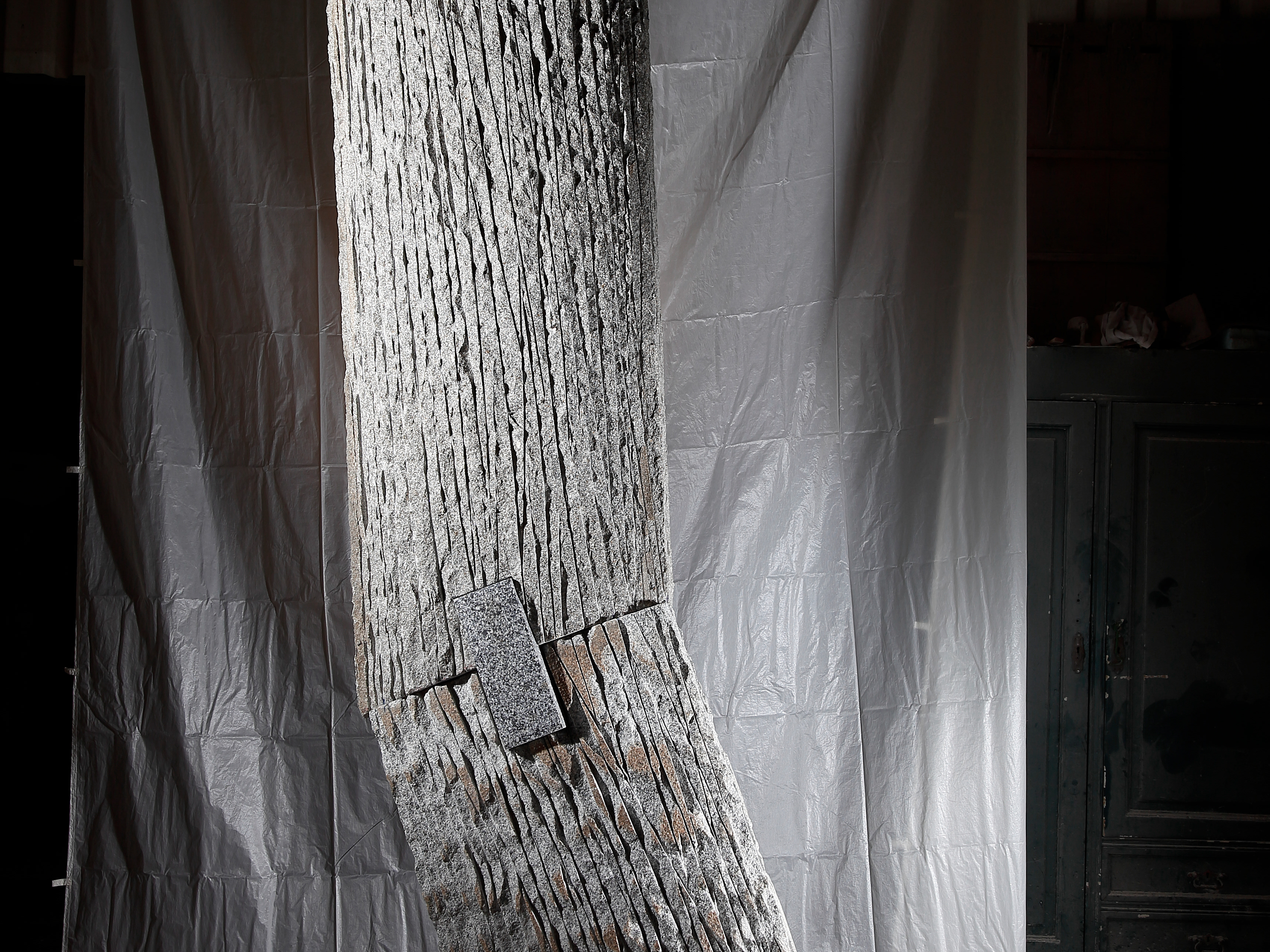Memorial Stone 2022
II. Wold War Memorial to Victims of XII. district of Budapest
photos: Maté Lakos 2023
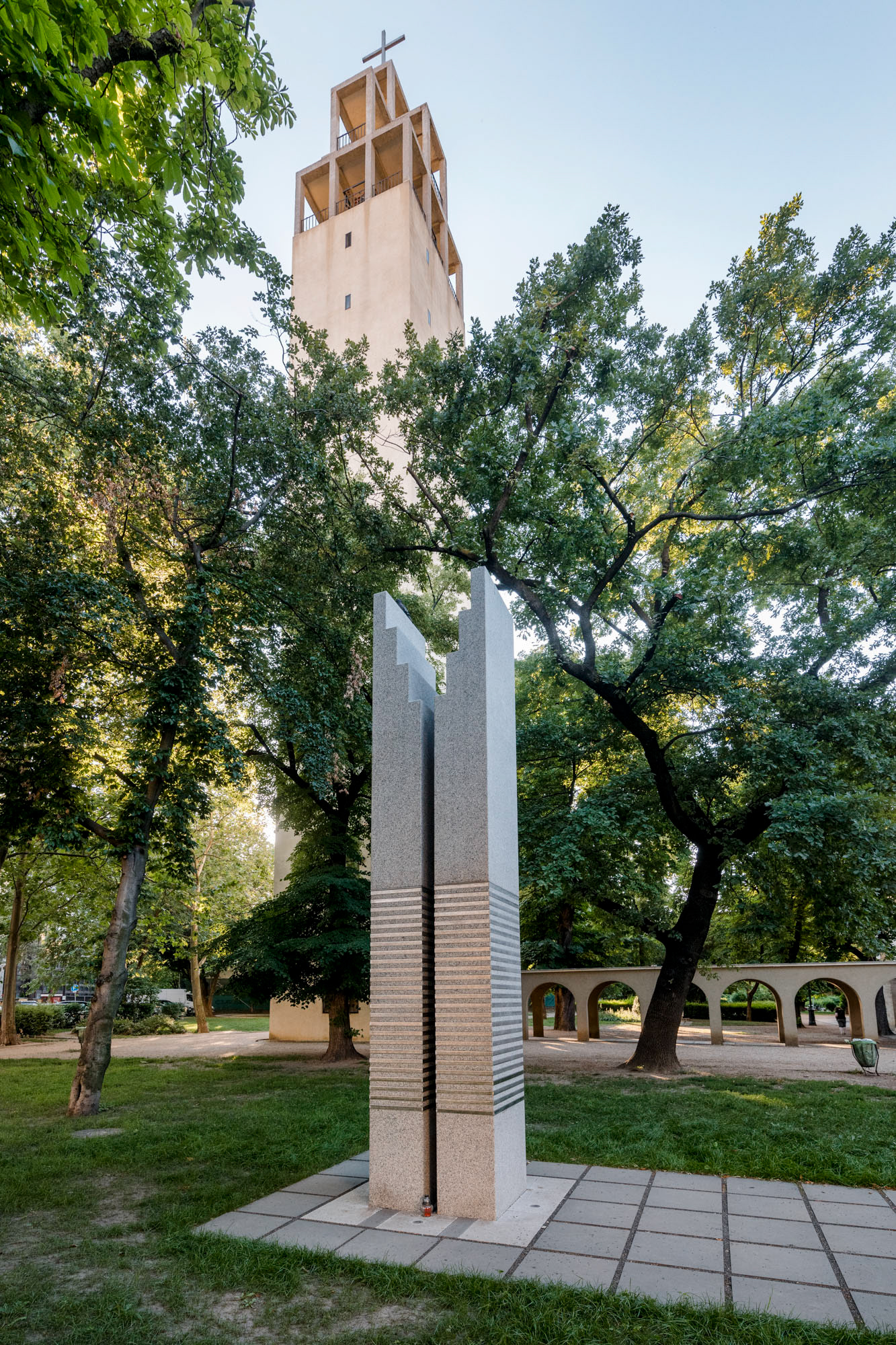
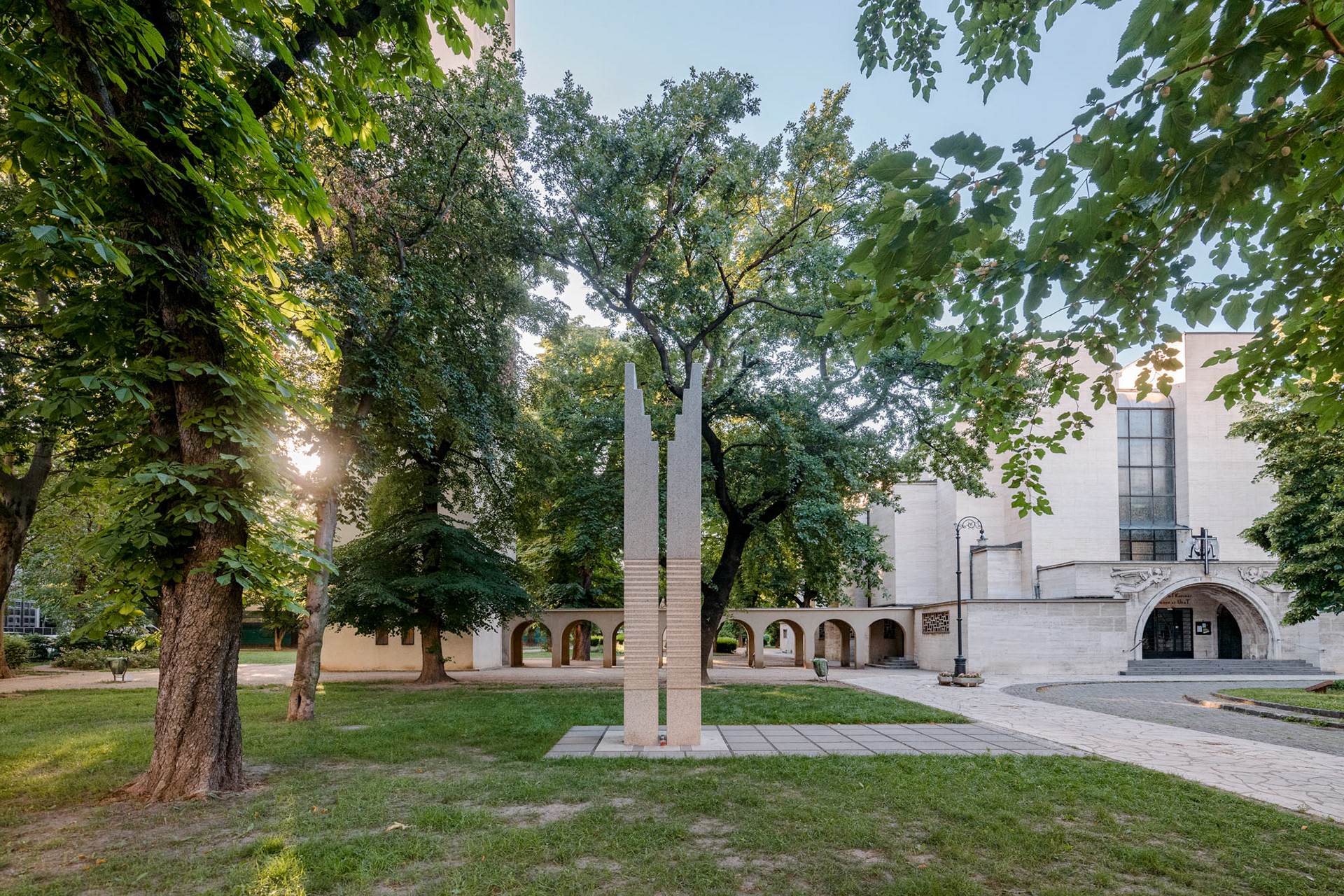

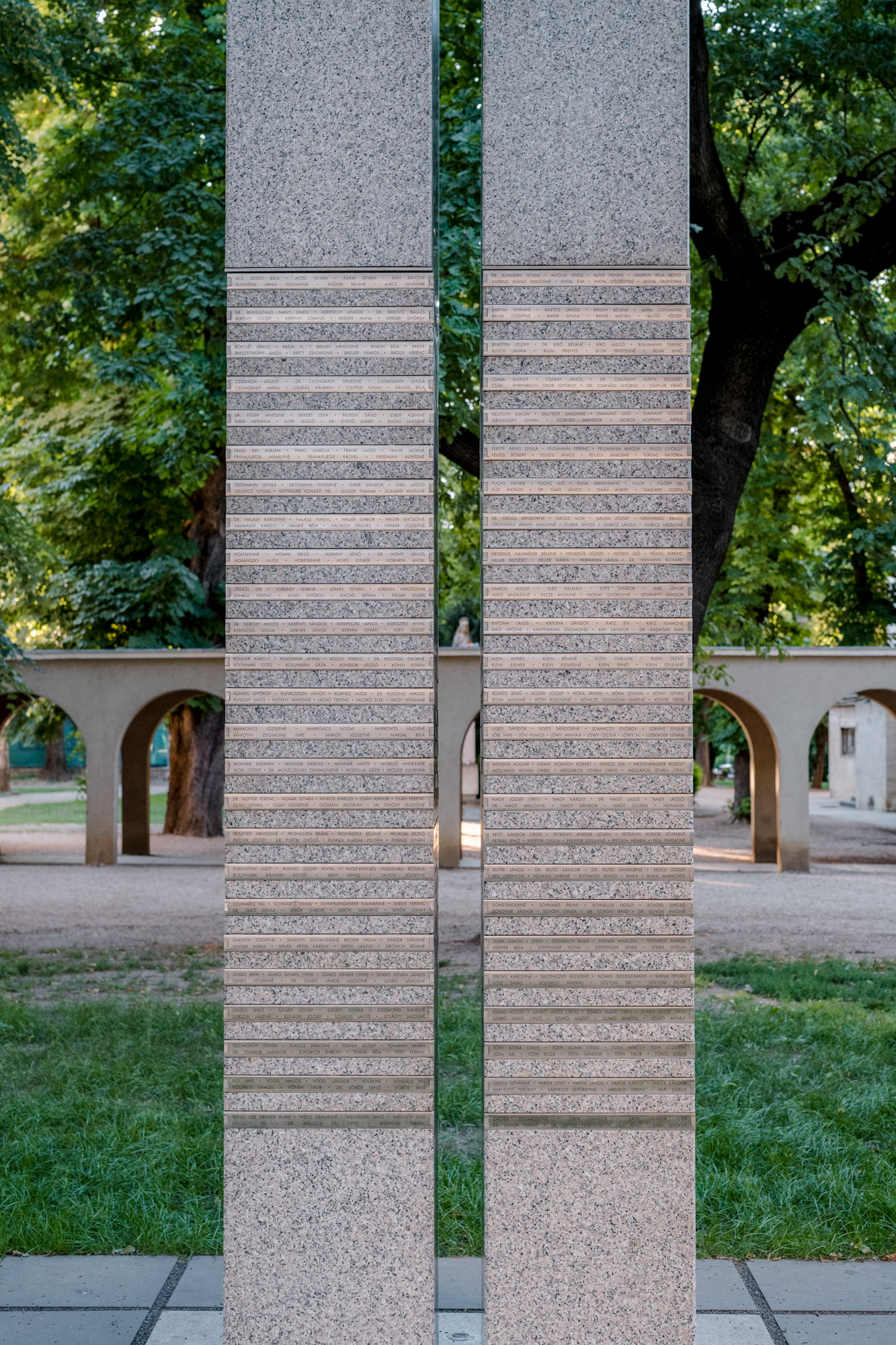


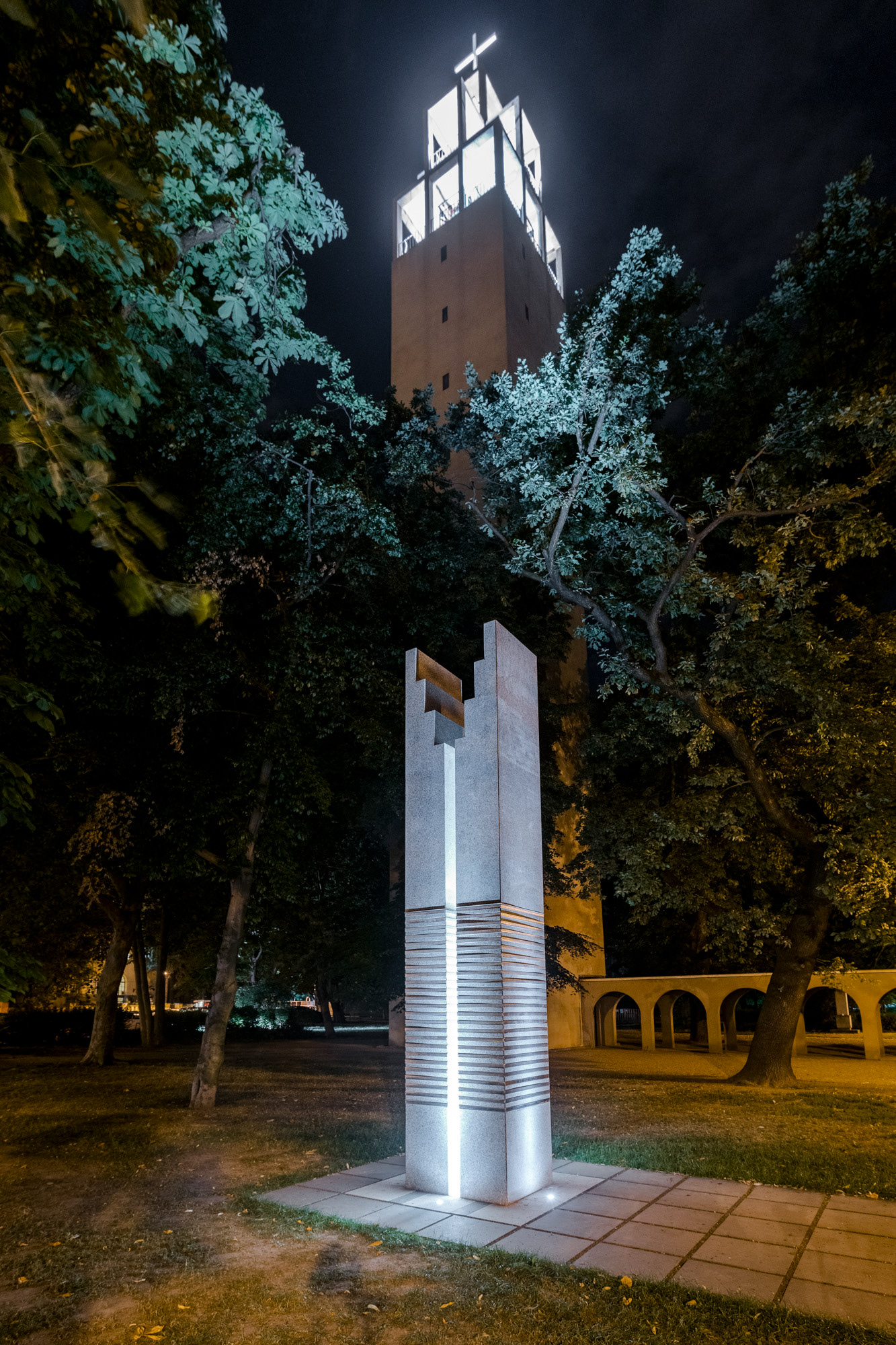
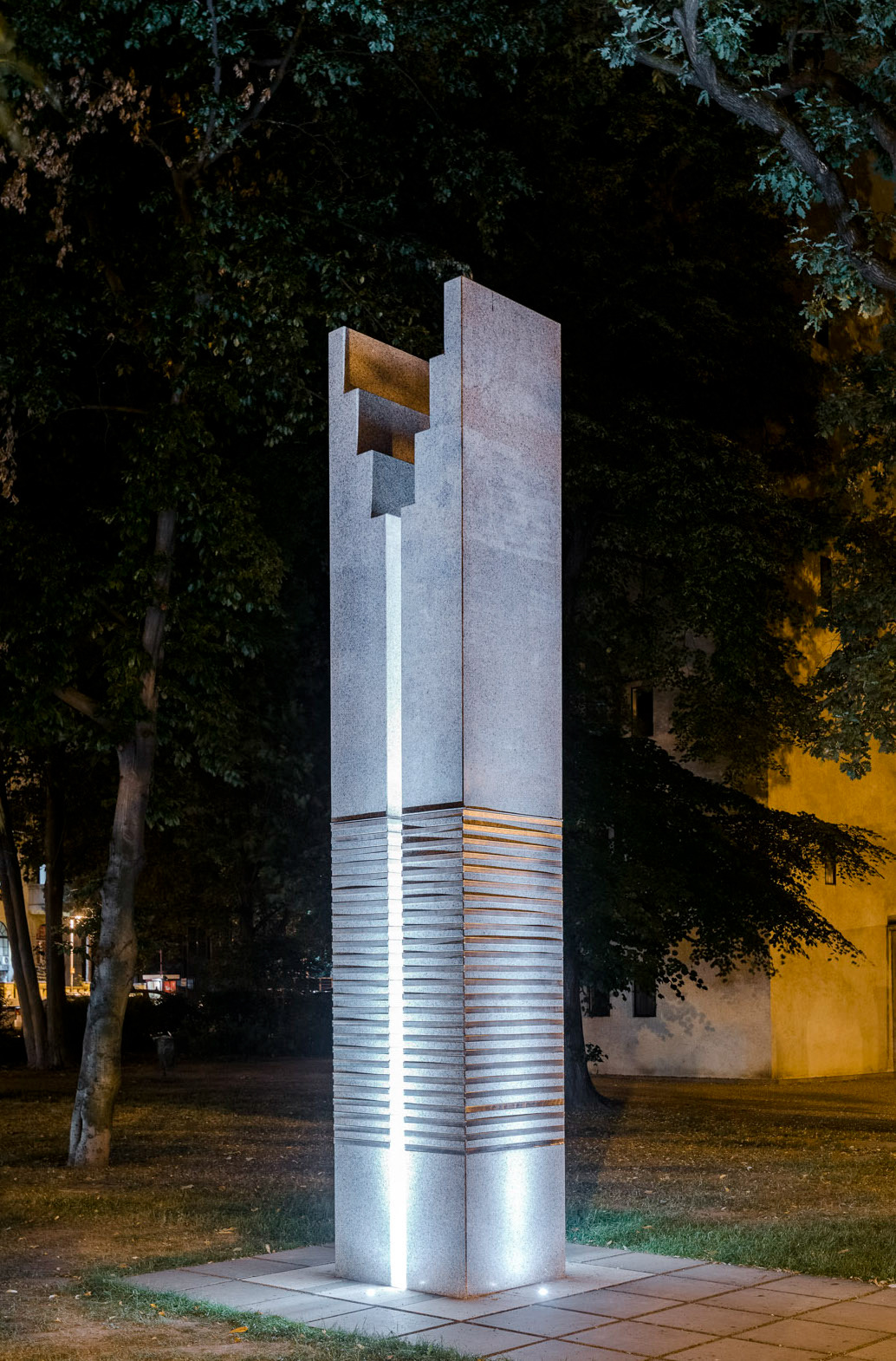
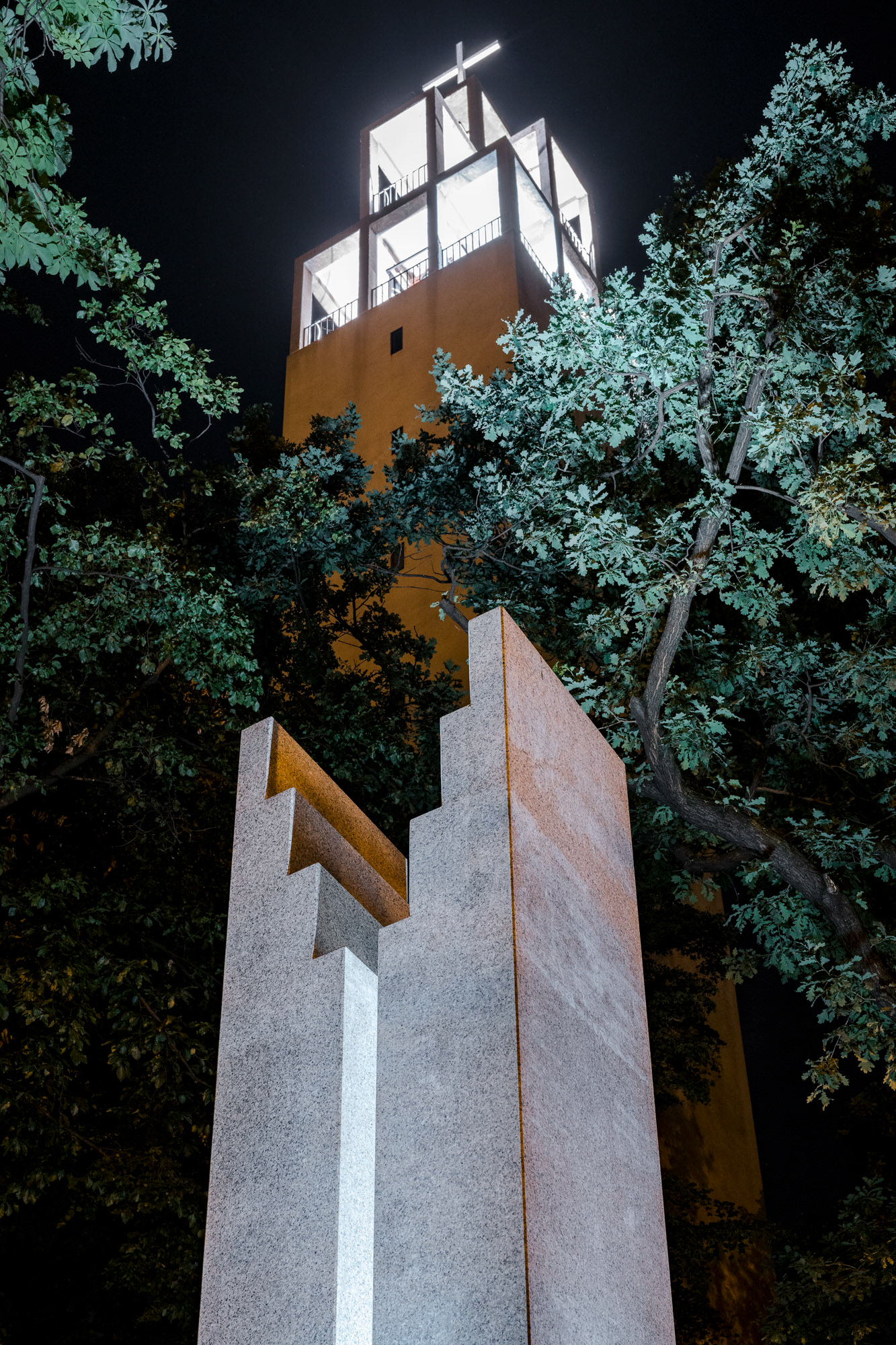
Memory Stone – 12 points
The Memory Stone commemorates the victims of World War II, with particular focus on the Hungarian Holocaust.
The sculpture consists of two parallel, rising granite blocks, between which a sharply defined void runs vertically.
This void is not an arbitrary formal gesture, but a mirrored silhouette of the nearby Városmajor church bell tower.
The church’s 1937 modernist Christian architecture appears here as an inverse — as absence.
The sculpture thus enters into a spatial and historical dialogue with the building, and also reflects on the silence of the church during that era.
The central gap is not only a visual rupture, but a symbol of the unspeakable — a trauma without witness.
I did not want to narrate history, but to engrave its silenced presence into stone.
The inscription on the sculpture and the direct narrative evoke a powerful field of meaning.
The relationship between form, absence, and mass evokes historical reality.
The architectural inversion is not only a void, but also an ethical statement.
The work functions as a spatial allegory that addresses the viewer both physically and emotionally.
Thus, the Memory Stone does not merely commemorate — it transforms historical absence into presence, in silence, in stone, in space.
-----
Emlékkő – 12 mondat
Az Emlékkő a második világháború, különösen a magyar Holokauszt áldozataira emlékeztet.
A szobor két párhuzamos, emelkedő kőtömbből áll, melyek között egy markáns kivágás fut.
Ez a kivágás nem önkényes formai játék, hanem a közeli Városmajori templom harangtornyának tükörképe.
A templom 1937-es modernista keresztény épülete itt inverzként, hiányként jelenik meg.
A szobor ezzel térbeli és történeti párbeszédbe lép az épülettel, és az egyház hallgatására is reflektál.
A középső nyílás nemcsak vizuális áttörés, hanem a kimondhatatlanság, a tanú nélküli trauma szimbóluma.
Nem elbeszéli szerettem volna a történelmet, hanem kőbe vési annak elnémított jelenlétét.
A szobron van felirat és a közvetlen narratíva töténelmi jelentéstartományt idéz meg.
A forma, a hiány és a tömeg viszonya idézi meg a történelmi tényeket.
Az építészeti forma inverze nem csak hiány, hanem etikai állítás is.
A mű térbeli allegóriaként működik, amely testileg és érzelmileg szólít meg.
Ezáltal az Emlékkő nemcsak emlékeztet, hanem jelenlétté formálja a történelmi hiányt – csendben, kőben, térben.
